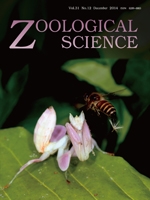Ladybird beetles in the tribe Epilachnini include notorious crop pests and model species studied intensively in various fields of evolutionary biology. From a combined dataset of mitochondrial (ND2) and nuclear (28S) DNA sequences, we reconstructed the phylogeny of 46 species of Epilachnini from Asia, Africa, America, and the Australian region: 16 species in Epilachna, 24 species in Henosepilachna, and one species each in Adira, Afidenta, Afidentula, Afissula, Chnootriba, and Epiverta. In our phylogenetic trees, both Epilachna and Henosepilachna were reciprocally polyphyletic. Asian Epilachna species were monophyletic, except for the inclusion of Afissula sp. Asian and Australian Henosepilachna species likewise formed a monophyletic group, excluding H. boisduvali. African Epilachna and Henosepilachna species did not group with their respective Asian and American congeners, but were paraphyletic to other clades (Epilachna species) or formed a separate monophyletic group (Henosepilachna species) together with Chnootriba similis. The American Epilachna species were monophyletic and formed a clade with American Adira clarkii and Asian Afidentula manderstjernae bielawskii; this clade was the sister group to Asian and Australian Henosepilachna, but was distant from Asian Epilachna. Chnootriba was embedded in the African Henosepilachna clade, and Afissula in the Asian Epilachna clade. Epiverta, which is morphologically unique, was the sister group to Asian Epilachna, although with weak support. From reconstructions of biogeographical distribution and host-plant utilization at ancestral nodes, we inferred an African origin for the common ancestor of the species studied, and found the frequency of host shifts to differ greatly between the two major lineages of Epilachnini examined.
How to translate text using browser tools
1 December 2014
Phylogeny of Epilachna, Henosepilachna, and Some Minor Genera of Phytophagous Ladybird Beetles (Coleoptera: Coccinellidae: Coccinellinae: Epilachnini), with an Analysis of Ancestral Biogeography and Host-Plant Utilization
Toru Katoh,
Shinsaku Koji,
Takahide A. Ishida,
Kei W. Matsubayashi,
Sih Kahono,
Norio Kobayashi,
Kota Furukawa,
Bui Tuan Viet,
João Vasconcellos-Neto,
Charles N. Lange,
Georg Goergen,
Susumu Nakano,
Nan-Nan Li,
Guo-Yue Yu,
Haruo Katakura
ACCESS THE FULL ARTICLE

Zoological Science
Vol. 31 • No. 12
December 2014
Vol. 31 • No. 12
December 2014
Epilachna
Epilachnini
Epiverta
Henosepilachna
historical biogeography
host shift




